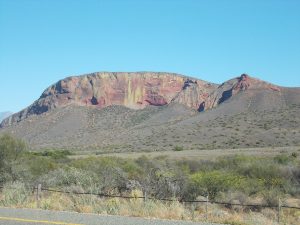Quinton Bullard’s water colour of Australia’s Heard Island, with the sealer Kildalkey off Atlas Cove
The Antarctic Legacy of South Africa has started its own publication series of Antarctic and sub-Antarctic books. The first in the series, Brian Huntley’s diary of his Marion Island sojourn as botanist on the First Biological & Geological Expedition in the mid 1960s, was published earlier this year (click here).

Two more books are in active preparation for publication next year. Both required ALSA to undertake a road trip this month to meet up with their appointed editors. I first travelled to the edge of the Western Cape to visit Marienne de Villiers (senior author of the Prince Edward Islands Conservation Handbook) and André Fourie (Marion 47th Overwintering Team, 1990) on their Klein Karoo farm near Oudtshoorn. There we spent a fruitful two and half days editing the English text that had been translated from the Afrikaans by Hanlie Gouws of Die Wit Horison written by Dr André le Roux van der Merwe, medic on South Africa’s first Antarctic overwintering team (SANAE 1) over 1959-1961.
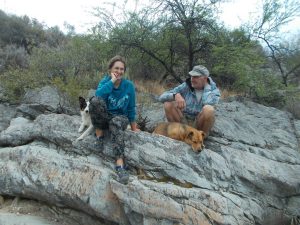
The book is an important one, not only because it is still, after more than half a century, the only book published by a South African National Antarctic Programme (SANAP) team member of their experiences – until Brian’s diary that is. The translation will bring André’s book to a wider, international audience. Marienne and I cleared up a number of issues: for example is “rolled into the compound” more redolent of returning to an Antarctic base in a tracked Muskeg than the literally translated “steamed into the yard”? We also looked through ALSA’s archive for SANAE 1 photos in colour to add to those originally published by van der Merwe in black and white.
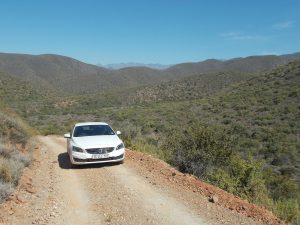
I then travelled into the Eastern Cape to the small country town of Willowmore to spend two days working with Marion veteran Genevieve Jones (M55, M63 and M65 overwintering teams), editing the text of Quinton Bullard’s manuscript A South African in Southern Latitudes to be subtitled Reminiscences of Sealing Expeditions at Heard, Kerguelen and Marion Islands, 1925 – 1930 and Whaling in the Antarctic, 1932 – 1934 (click here).
Genevieve and I spent some time with Australian and French maps of Heard and Kerguelen Islands, reconciling the old sealer’s names for geographical features used by Bullard with their modern equivalents, enabling us to work out his movements on both islands from bay to bay after elephant seals. Bullard’s account of elephant sealing at Marion is highly significant as his expedition on the Kildalkey in October and November 1930 was the very last commercial sealing undertaken on the island: nowadays the island’s sealers thankfully study, rather than slaughter, Marion’s marine mammals (click here). We also worked out and divided up between us the remaining editorial tasks, such as writing an introductory text, finishing the explanatory foot notes and choosing illustrations.
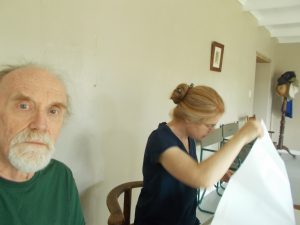
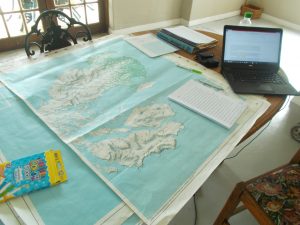
.
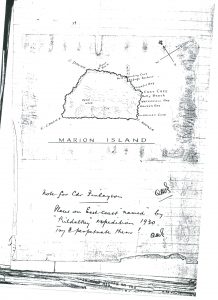
All in all, a productive and enjoyable trip – despite the mid 30s weather. At least one more liaison trip will be necessary before the two ALSA books can go to the printer next year, with luck in cooler conditions next year.
With thanks to Marienne de Villiers, André Fourie and Genevieve Jones for hospitality in their homes. Thanks also to the Trans-Antarctic Association for funding the translation of Die Wit Horison.
John Cooper, Principal Investigator, Antarctic Legacy of South Africa, Department of Botany & Zoology, Stellenbosch University, 17 December 2016
